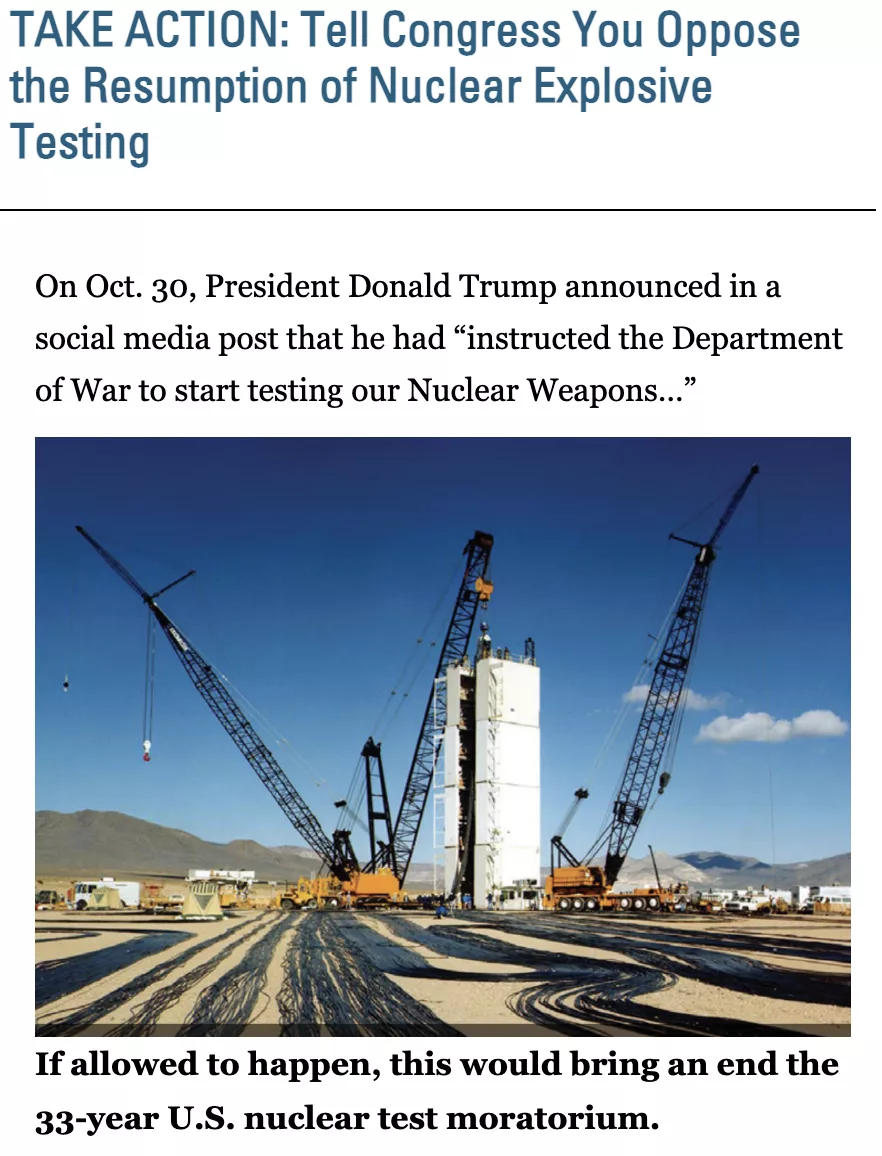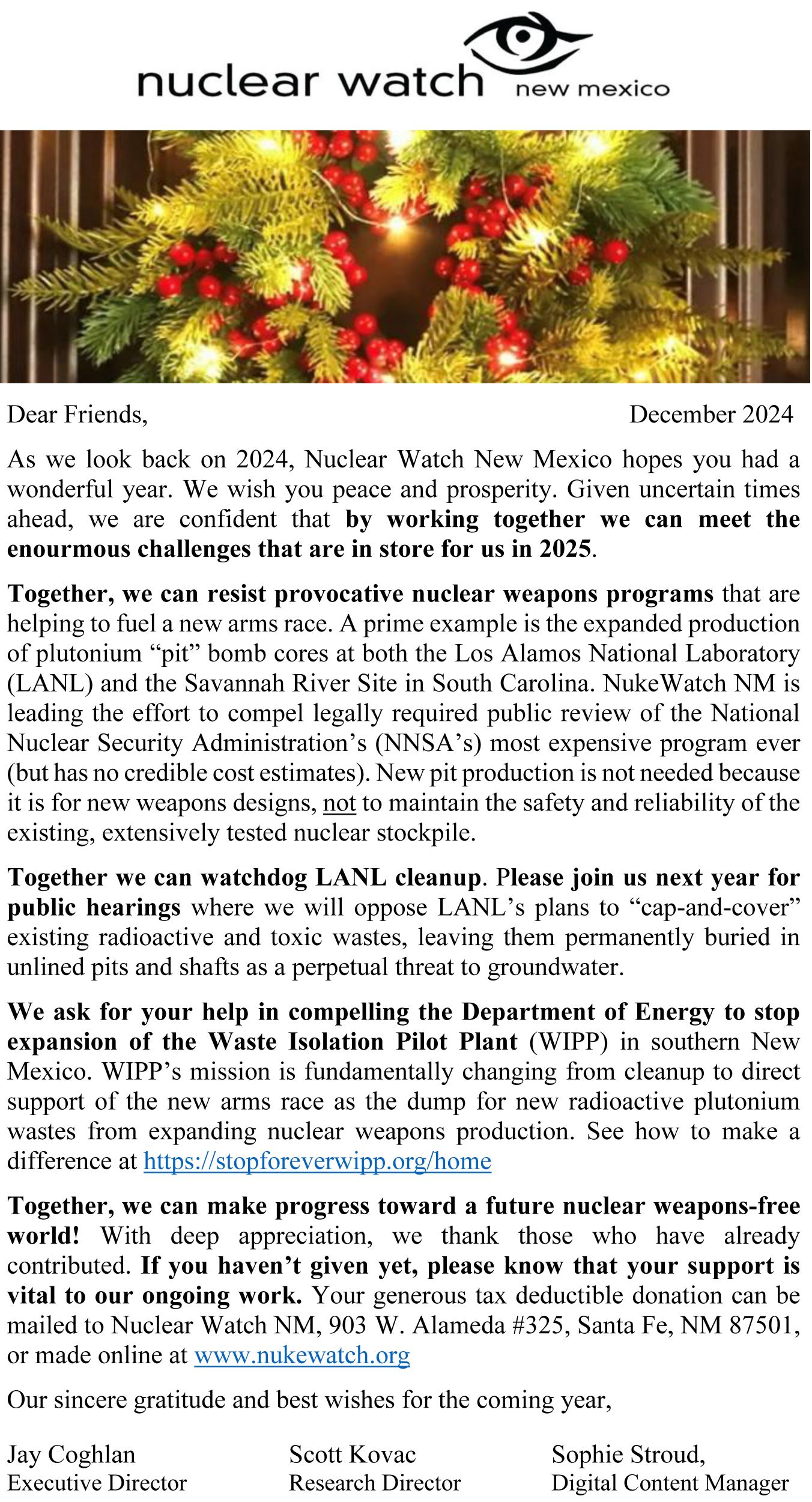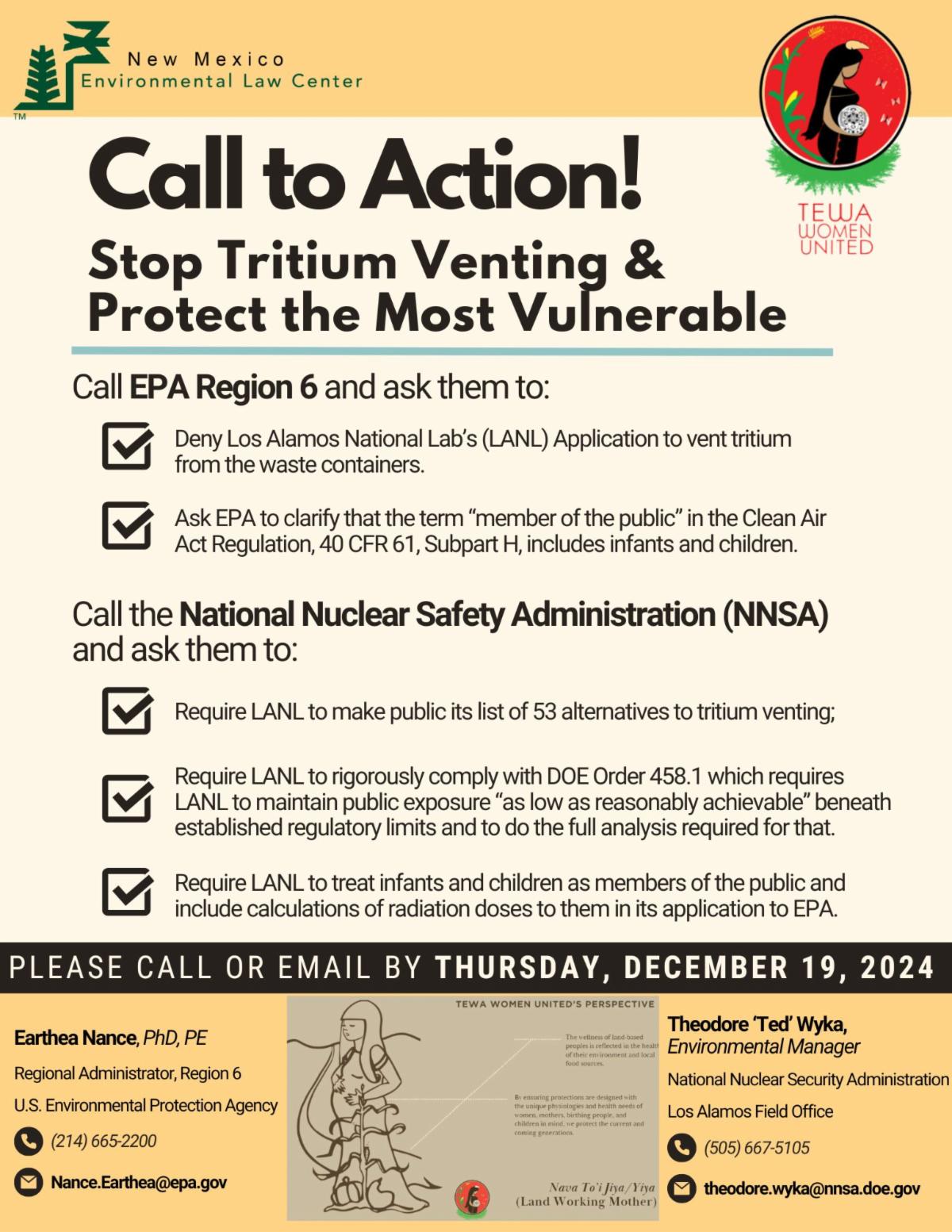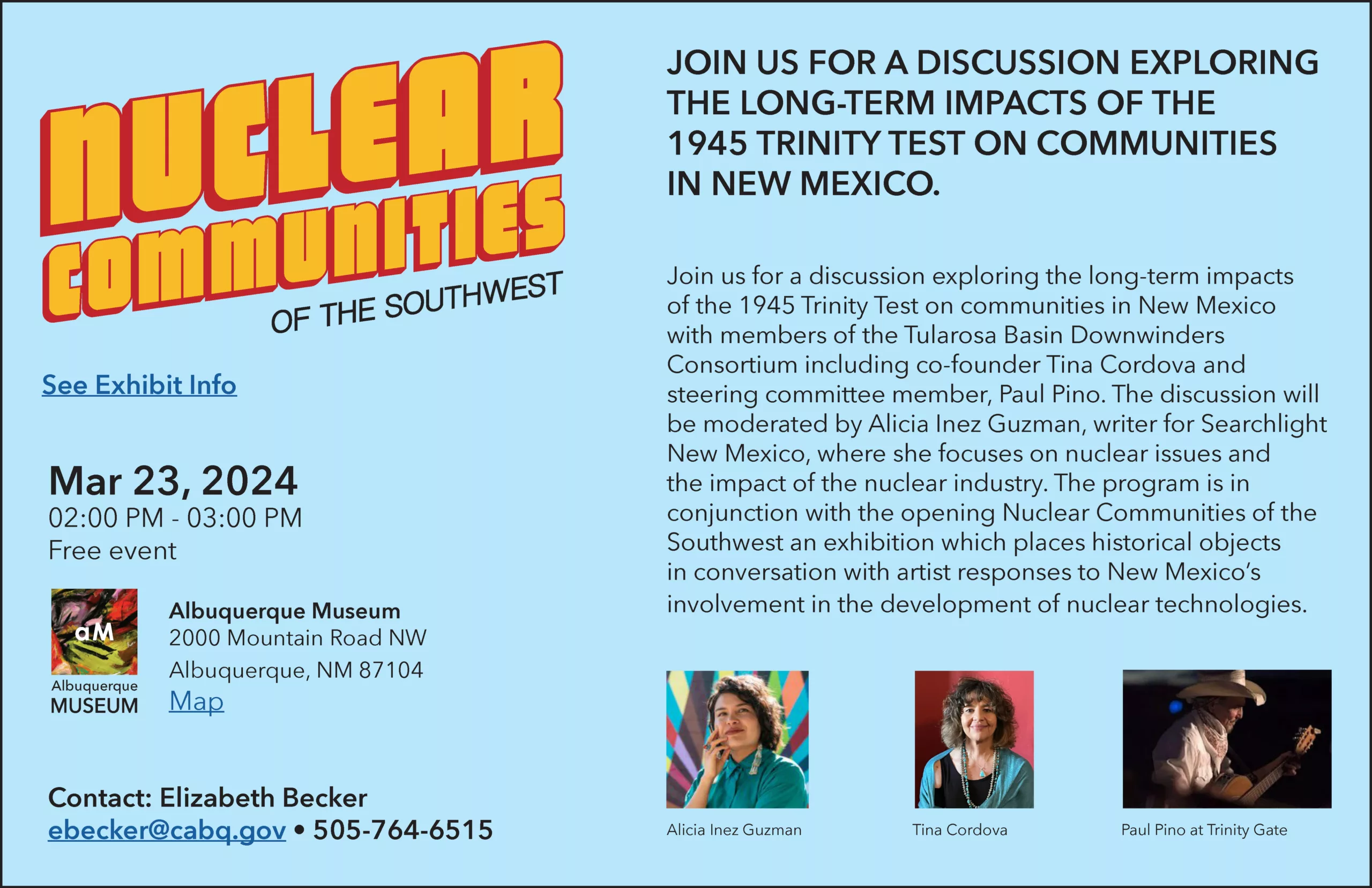URGENT ACTION NEEDED to Help Protect the Defense Nuclear Facilities Safety Board!
Congress must act to keep the Defense Nuclear Facilities Safety Board (DNFSB) from losing its quorum on October 18. We need YOUR help to get them to take action in the pending Continuing Resolution to keep the government running!
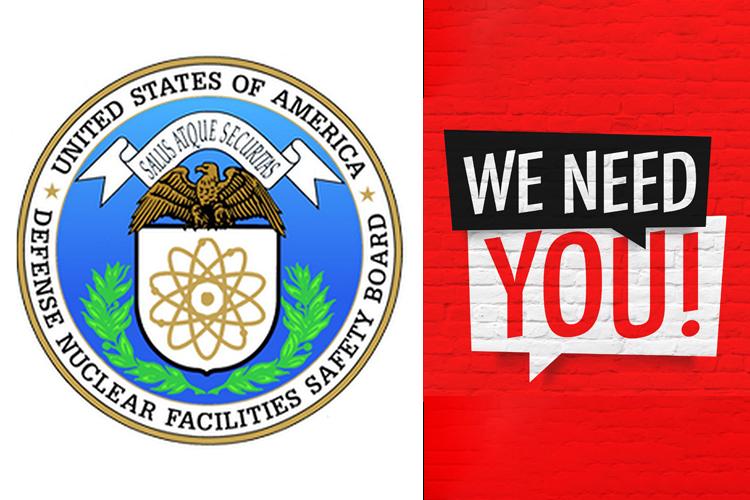 The Defense Nuclear Facilities Safety Board is an independent agency within the executive branch of the Federal Government. (https://www.dnfsb.gov/) The DNFSB is chartered with the responsibility to provide recommendations and advice to the Secretary of Energy regarding public health and safety issues at Department of Energy (DOE) defense nuclear facilities, including with respect to the health and safety of employees and contractors and the nearby communities.
The Defense Nuclear Facilities Safety Board is an independent agency within the executive branch of the Federal Government. (https://www.dnfsb.gov/) The DNFSB is chartered with the responsibility to provide recommendations and advice to the Secretary of Energy regarding public health and safety issues at Department of Energy (DOE) defense nuclear facilities, including with respect to the health and safety of employees and contractors and the nearby communities.
Congress established the Board in 1988 in response to longtime, ongoing concerns about the level of health and safety protection that DOE was providing the public and workers at defense nuclear facilities, including concerns from Alliance for Nuclear Accountability (ANA) groups. We would not know about the many DOE nuclear safety problems without the Safety Board.
There are five positions on the Board for experts in the field of nuclear safety with demonstrated competence and knowledge relevant to its independent investigative and oversight functions. However, since early 2025, the Board has been reduced to just two members, Mr. Thomas A. Summers (a Republican nominee whose term ends on October 18, 2025), and Dr. Patricia L. Lee. The Board currently has a temporary one-year statutory quorum. Since there is no indication that Mr. Summers might be allowed to extend his term, the Board may be down to one person after October, and will then lack a quorum. Without its quorum, the DNFSB can not carry out its mission effectively.
Congress must take action to protect nuclear safety by preserving DNFSB’s quorum!
Here’s how you can help:
Congress is in the process of negotiating a new Continuing Resolution (CR) to fund the government for FY 2026. The CR should contain a provision to enable the Defense Nuclear Facilities Safety Board to continue in its current capacity. The provision is a temporary measure only until the Administration and Senate can nominate and confirm additional Board Members. Take action now to urge Chuck Shumer (Senate Minority Leader) and other Senators to protect the DNFSB!Continue reading
JOIN US: Upcoming Virtual Workshops on the Nationwide Programmatic Environmental Impact Statement
JOIN US: Virtual Workshop
On the Nationwide Programmatic Environmental Impact Statement on the Expanded Production of Plutonium “Pit” Bomb Cores
Public comments help increase transparency and safety.
It is crucial that the National Nuclear Security Administration (NNSA) and US Department of Energy hear from scientists, experts, and community members like you.
Public Comment Training #2: Expanded Plutonium Pit Production
Date: Thursday, June 26
Time: 6:00–7:00 p.m. ET, 4:00–5:00 p.m. MT
![]()
This workshop will feature:
- Talking points and suggested scoping comments
- Explanation of procedural process
- The Union of Concerned Scientists’ new comprehensive study of pit production at www.ucs.org/resources/plutonium-pit-production
- Question & answers with subject matter experts
Background: Pursuant to the National Environmental Policy Act, Nuclear Watch New Mexico, Savannah River Site Watch and Tri-Valley CAREs successfully sued the National Nuclear Security Administration (NNSA) over its failure to complete a required nationwide “programmatic environmental impact statement” (PEIS) for its most costly program ever, the expanded production of plutonium “pit” bomb cores. Their production is the current chokepoint to resumed industrial-scale of nuclear weapons by the United States. Ironically, no future pit production is to maintain the safety and reliability of the existing nuclear stockpile. Instead, all future pit production is for new design nuclear weapons for the new nuclear arms race.
To meet its enforced legal obligation, the NNSA must consider written comments submitted by July 14 on what the scope of the PEIS should be. NNSA wants to keep its scope narrowly confined to discussion of alternative levels of pit production rather than questioning the need for production to begin with. A few examples of needed scope include compliance with the NonProliferation Treaty, reusing existing pits, ensuring nuclear safety, the lack of credible cost estimates and where radioactive wastes will go. For more see suggested scoping comments at https://nukewatch.org/wp-content/uploads/2025/05/Pit-PEIS-suggested-scoping-comments-5-27-25.pdf
Scoping comments due by July 14 can be emailed to PitPEIS@nnsa.doe.gov or mailed to:
Ms. Kristen M. Dors, NEPA Compliance Officer
NNSA Los Alamos Field Office
3747 W. Jemez Road, Los Alamos, NM 87544
For additional background, see NNSA’s formal Notice of Intent at https://www.energy.gov/nepa/articles/doeeis-0573-notice-intent-may-2025 for the PEIS Following publication of a draft PEIS (expected in a year), in person public hearings will be held in Livermore, CA; Santa Fe, NM; Kansas City, MO; Aiken; SC, and Washington, DC.
Let’s transform this Pit Production Programmatic Environmental Impact Statement into a public referendum on the new nuclear arms race!
Organized By:
Nuclear Watch New Mexico | nukewatch.org
Savannah River Site Watch | srswatch.org
 Tri-Valley CAREs | trivalleycares.org
Tri-Valley CAREs | trivalleycares.org
Union of Concerned Scientists | ucs.org
Sign the Petition to Deny LANL’s Request to Release Radioactive Tritium into the Air to Governor Lujan Grisham and New Mexico Environment Department
Los Alamos National Laboratory (LANL) plans to begin large releases of radioactive tritium gas any time after June 2, 2025. The only roadblock is that LANL needs a “Temporary Authorization” from the New Mexico Environment Department (NMED), which could happen soon. Below are the facts:
• Why the rush? LANL has explicitly stated, “There is no urgency for this project beyond the broader mission goals to reduce onsite waste liabilities.”
• LANL claims need the need to vent based on modeling, not physical sampling of container headspace.
• LANL wants to vent about 9 grams of tritium (~100,000 curies) over the span of a few days. This is three times the amount of tritium as Japan is dumping into the Pacific Ocean over the span of 30 years from the tsunami and nuclear reactor explosions at Fukushima Daiichi Nuclear Power Plant.
• One teaspoon of tritiated water (HTO) can contaminate around 100 billion gallons of water.
• When calculating the risk, LANL only does so for adults – they are not required to do so for children, infants or pregnant women/fetuses – ignoring the real impact on our communities. The author of one report, Bernd Franke, stated, “In the case of tritium, infants and small children get a radiation dose about three times greater than adults, with the same concentrations of tritium in air, water, and food.”
Public Hearings: Submit Comments on the Draft LANL SWEIS
- Review and submit comments on the Draft LANL SWEIS through March 11, 2025.
- Comments may be submitted via one of the following means:
- By email to: LANLSWEIS@nnsa.doe.gov; By mail to Mr. Stephen Hoffman, LANL SWEIS Document Manager, DOE/NNSA, 3747 W. Jemez Road, Los Alamos, New Mexico 87544; Verbally at one of the public hearings; In written form at one of the public hearings
-
Public hearings are scheduled for:
- February 11, 2025, at the Santa Fe Community Convention Center, Sweeney Room, 1-4 p.m. and 5-8 p.m. There will be a virtual option for these two meeting. Virtual hearing access instructions (g., website link or phone number) will be announced at least 15 days before the hearing and will be published in local newspapers, noticed to the GovDelivery mailing list, and available on the following websites: https://www.energy.gov/nnsa/nnsa-nepa-reading-roomand https://www.energy.gov/nepa/public-comment-opportunities.
- February 12, 2025, in Española at Mision y Convento, 5-8 p.m. This meeting is in-person only.
- February 13, 2025, in Los Alamos at Fuller Lodge, Pajarito Room, 5-8 p.m. In-person only.
- Comments may be submitted via one of the following means:
Briefing on Plutonium Migration at the Los Alamos National Laboratory
Who: Nuclear Watch New Mexico and chemist Dr. Michael Ketterer, Professor Emeritus of Chemistry and Biochemistry at Northern Arizona University
What: Nuclear Watch has mapped plutonium migration based on sampling data from Intellus, the Lab’s environmental sampling database. Our map graphically demonstrates widespread contamination down the Rio Grande to Cochiti Lake and vertically to deep groundwater. We believe it shows the need for comprehensive cleanup at LANL instead of proposed “cap and cover” that will leave toxic and radioactive wastes permanently buried in unlined pits and trenches.
When: 11:00 am MT Thursday April 25, 2024
Where: https://us06web.zoom.us/j/95570087953?pwd=R1hNUEIyb1BLaktDQzZQaWNEdlpoQT09
Meeting ID: 922 1214 9822 Passcode: 975887
This virtual briefing is for media and the public. Nuclear Watch and Dr. Ketterer will briefly present followed by Q&A. Media and reporters will be given preference for questions. Please feel free to forward this notice to others.
Our plutonium contamination map and background materials will be available at www.nukewatch.org by 10:00 am MT Thursday April 25.

